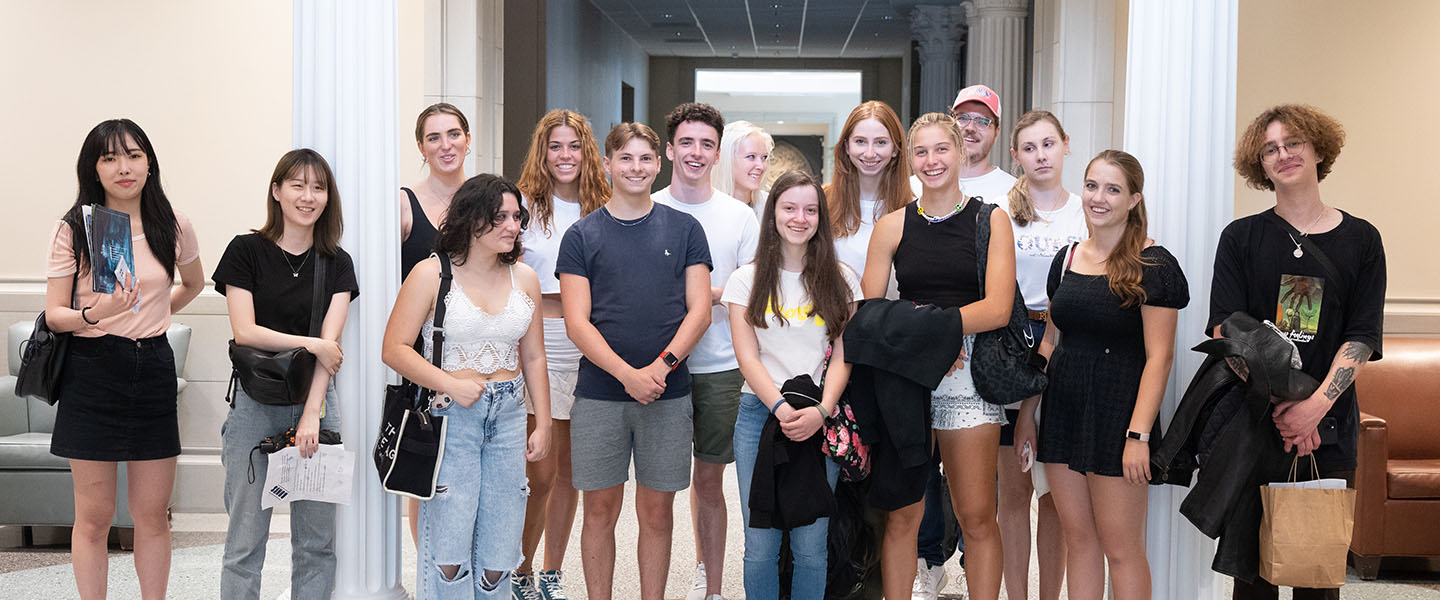Most of Belmont University's international students hold F-1 visa status. To be eligible for F-1 status, you must be admitted to or enrolled in a full-time degree program, and demonstrate sufficient financial support for your program of study. Before you apply at a U.S. Embassy or Consulate for your F-1 visa, you must first apply and be accepted by a Student and Exchange Visitor Program (SEVP) approved school. Belmont University is an SEVP approved school.
Once you are accepted and have been issued your I-20 form, this means we expect you to enroll in a specific program of study at Belmont and that we have created a record for you in the Student and Exchange Visitor Information System (SEVIS). The I-20 includes dates and information about your intended program of study. You can find your unique SEVIS ID in the upper-right corner of page 1 of your I-20. You will also need to pay a SEVIS fee and schedule the visa application appointment at the US consulate or embassy closest to where you currently reside.
Applying For the Visa
- Complete Form DS-160: Online Nonimmigrant Visa Application from the DOS Consular Electronic Application Center
- Upload your photo to Form DS-160. Learn more about photo guidelines and how to upload your photo here.
- Pay the non-refundable visa application fee. Check with the consulate for the fee amount and how it must be paid, or visit the DOS website
- Print and bring the application to your visa interview with your letter of acceptance from Belmont University
Schedule An Interview
Schedule an appointment for your visa interview at the U.S. Embassy or Consulate in the country where you live. You may schedule your interview at any U.S. Embassy or Consulate; however it may be difficult to qualify for a visa outside of your place of permanent residence.
What To take to Your Visa Interview
- Passport
- Nonimmigrant Visa Application: Form DS-160 confirmation page
- Application fee payment receipt
- Photo
- Form I-20 from Belmont University
- Other suggested items to bring: your transcripts or diplomas, test scores such as TOEFL or IELTS, source of funds for your education in the United States, your intent to depart the United States when your studies are complete
Attend Your Visa Interview
- During your visa interview a consular officer will determine whether you are qualified to receive a visa and which category is appropriate based on your purpose of travel.
- Ink-free digital fingerprints will be taken at the interview.
- After your interview, you will be informed if further administrative processing is required.
- When the visa is approved, you will be informed when your passport with the visa will be ready for pick up or delivered to you by courier.
Entering The United States
A visa allows a foreign citizen to apply to a U.S. port of entry and request permission to enter the United States. A visa does not guarantee entry to the United Sates. The Department Homeland Security (DHS) and U.S. Customs and Border Patrol (CBP) at the port of entry have authority to permit or deny admission to the U.S. If you are allowed to enter the U.S., you will be given an I-94 visa stamp in your passport and you may proceed to your destination.
New Students
F-1 student visas may be issued up to 120 days in advance of your university start date. However, you will not be allowed to enter the U.S. in F-1 status earlier than 30 days before your university start date.
Continuing Students
May renew their visas at any time as long as they have maintained status and their SEVIS records are current. Continuing students may enter the United States at any time before their classes start.

